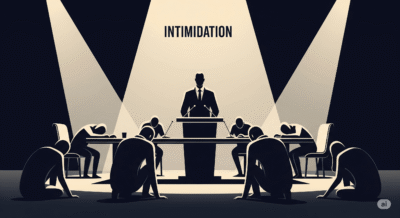Have you ever spoken, truly spoken, only to feel your words dissolve into thin air? You share a concern, a joy, or a complex idea, but the person opposite you is merely waiting for their turn to speak. This hollow exchange is profoundly common, yet it leaves us feeling unseen and disconnected. The antidote is not simply to hear better, but to engage in a transformative practice: The art of active listening.
This is not a passive act of receiving sound; it is a conscious, active skill of presence and understanding that can fundamentally change your relationships, your career, and your perception of the world. It is the bridge between isolation and genuine connection.
Table of contents
- 1. Beyond Hearing: What Truly Defines The art of active listening?
- 2. The Four Foundational Pillars: Your Blueprint for The art of active listening
- 3. Uncovering the Three Levels: Which Type of Listening Do You Need?
- 4. The Art of Listening in the Real World: Three Detailed Scenarios
- 5. Challenging Misconceptions: Three Myths About Listening We Need to Forget
- Conclusion
1. Beyond Hearing: What Truly Defines The art of active listening?
Many people mistakenly believe that hearing and listening are the same. Hearing is a physiological process, the automatic reception of sound waves by the ears. It is passive and requires no effort. You can hear the traffic outside your window or the hum of a refrigerator without paying any attention to it.
Conversely, The art of active listening is a psychological and cognitive act. It is an active process that requires deliberate effort, concentration, and intent. To truly listen is to choose to focus on the speaker, to process their words, to understand their intended meaning, and to remember what they have said.
It involves paying attention not just to the words, but also to the non-verbal cues—the tone of voice, the facial expressions, and the body language—that provide a much richer context. Therefore, while hearing is an involuntary sense, listening is a voluntary skill that you must cultivate and practice.
2. The Four Foundational Pillars: Your Blueprint for The art of active listening
To move from a passive hearer to an active listener, you need to build your practice on four essential pillars. Mastering these will provide you with a solid framework for how to implement Listening in any conversation.
2.1. Pillar 1: Total Presence and Concentration
This is the absolute foundation. You cannot actively listen if your mind is elsewhere.
- How to do it: First, you must consciously decide to give the speaker your undivided attention. This involves making both internal and external adjustments. Externally, put away distractions. This means putting your phone down—not just turning it face down, but putting it completely out of sight. Turn away from your computer screen. If you are in a noisy environment, suggest moving to a quieter place.
- Internal adjustment: Internally, you must quiet your own “inner monologue.” This is the stream of thoughts about what you want to say next, your judgments about what is being said, or your to-do list for the day. A practical technique is to mentally repeat the speaker’s key words or phrases as they say them. This forces your brain to stay aligned with their message instead of drifting away.
2.2. Pillar 2: The Pursuit of Deep Understanding
The goal of active listening is not just to hear words but to understand the complete message, including the underlying emotions and intentions.
- How to do it: One of the most powerful techniques here is paraphrasing. After the speaker has shared a significant point, you should summarize it in your own words. You can start with phrases like, “So, if I’m understanding you correctly, you’re feeling…” or “It sounds like what you’re saying is…” This does two things: firstly, it confirms to the speaker that you are paying attention, and secondly, it gives them an opportunity to correct any misunderstanding.
- Additionally, ask clarifying and open-ended questions. Avoid simple “yes” or “no” questions. Instead of asking, “Was that difficult?” ask, “What were the most challenging parts of that experience for you?” This encourages the speaker to elaborate and share more detail, leading to a much deeper level of understanding.
2.3. Pillar 3: Acknowledgment and Thoughtful Response
A listener must show that they are engaged. This involves both non-verbal and verbal feedback that acknowledges the speaker’s message without necessarily agreeing with it.
- How to do it: Use non-verbal cues. Maintain comfortable eye contact. Nod your head to show you are following along. Use facial expressions that match the speaker’s tone—a concerned look for a sad story, a smile for a happy one. These small physical signals are incredibly powerful and communicate that you are present and connected.
- Verbally, use brief affirmations like “I see,” “That makes sense,” or “I can understand why you would feel that way.” These are not statements of agreement, but of validation.
- They tell the speaker that their feelings are legitimate and have been heard. When it is your turn to speak fully, pause and think before you respond. A thoughtful, measured reply shows more respect than an immediate, reactive one.
2.4. Pillar 4: Remembering for Deeper Connection
The final pillar of Active Listening is remembering what you have been told, not just for the current conversation but for the future of the relationship.
- How to do it: When someone shares something important with you—a project they are working on, a family member’s name, a significant upcoming date—make a mental note of it. Better yet, if appropriate, jot it down later. The next time you see them, you can ask, “How did that presentation go last Tuesday?” or “How is your mother, Anisa, feeling now?” This simple act of remembering demonstrates a profound level of care and respect. It shows that their words did not just enter your ears and disappear; they were valued and retained. This is what builds strong, lasting trust and rapport.
3. Uncovering the Three Levels: Which Type of Listening Do You Need?
The Art of Listening is not a one-size-fits-all activity. Depending on the situation and your goal, your listening style may need to change. Understanding these three primary types allows you to adapt your approach for maximum effectiveness.
3.1. Informational Listening: Gathering the Facts
This is perhaps the most straightforward type of listening. The primary goal is to learn, understand, and retain specific information accurately. You use this when receiving instructions from a manager, attending a lecture, or learning how to operate a new device.
- When to use it: In professional or educational settings where accuracy is key.
- How to practice it: Focus on the core message. Ask clarifying questions specifically to get more detail (“By what date do you need this report?”). Taking notes is highly effective here. The focus is less on emotion and more on the precise content being delivered.
3.2. Critical Listening: Evaluating the Message
Critical listening involves analyzing and evaluating the message you are hearing. Your goal is to understand the speaker’s point of view, but also to assess its logic, credibility, and potential biases.
- When to use it: When someone is trying to persuade you, such as in a sales pitch, a debate, or a negotiation.
- How to practice it: You must listen for evidence, reasoning, and logical consistency. Ask yourself: Is the speaker providing facts or opinions? Is their argument sound? What might be their underlying motive? This does not mean being cynical; rather, it means being a discerning and thoughtful listener who does not accept information passively.
3.3. Empathetic Listening: Connecting with the Emotion
This is the deepest and most relational form of listening. The goal is not to judge, advise, or solve, but simply to understand and share the feelings of the speaker. It is about creating a safe space for them to express themselves without fear of criticism.
- When to use it: When a friend or family member is sharing a personal struggle, a success, or expressing strong emotions.
- How to practice it: Your focus shifts from the content of the words to the emotions behind them. Use phrases that validate feelings: “That sounds incredibly frustrating,” or “I can only imagine how happy that must have made you.” Avoid the urge to immediately offer solutions (“You should do this…”).
- Sometimes, the greatest gift you can give someone is to simply be a compassionate witness to their experience. This is often the most challenging but also the most rewarding application of Active Listening.
4. The Art of Listening in the Real World: Three Detailed Scenarios
Theory is one thing; practice is another. Let’s explore how The art of active listening plays out in detailed, realistic situations.
4.1. Scenario 1: The Overwhelmed Colleague at the Office
The Situation: Your colleague, Chen, looks visibly stressed. He approaches your desk and says, “I am completely buried. I’ll never get the Q3 report done on time with this new project they just handed me.”
- A Poor Listener’s Response: “Yeah, we’re all busy. You just have to manage your time better.” (This is dismissive, judgmental, and offers an unhelpful cliché).
- An Active Listener’s Response:
- Presence: Maria stops typing, turns her full body to face Chen, and makes eye contact. She puts her pen down.
- Understanding & Acknowledgment: She says, “Wow, that sounds really stressful. So on top of the big Q3 report, you’ve been given another major project?” (This paraphrases the problem and validates his feeling of being overwhelmed).
- Encouraging Elaboration: Chen, feeling heard, elaborates: “Exactly. The new project has its own deadline, and I can’t see how the timelines can possibly work together. I feel like I’m being set up to fail.”
- Empathetic Listening: Maria responds, “I can see why you’d feel that way. It’s frustrating when you’re given conflicting priorities without any support.” (She focuses on the feeling of frustration and being unsupported, not on solving the problem yet).
- Moving to Collaboration (only after listening): After letting Chen fully explain, Maria might then ask, “Would it be helpful to brainstorm some ways to present this timeline conflict to the manager?”
The Outcome: Chen feels validated, understood, and supported. He is no longer just stressed; he is now in a collaborative mindset. The professional relationship between him and Maria is strengthened. This is The Art of Listening building trust at work.
4.2. Scenario 2: The Misunderstood Teenager at Home
The Situation: Your teenage son, Leo, comes home and slams his bag on the floor. You ask what’s wrong, and he mutters, “School is pointless. My history teacher, Mr. David, is totally unfair.”
- A Poor Listener’s Response: “Don’t be ridiculous. School is very important, and you need to respect your teachers.” (This invalidates his feelings, lectures him, and creates a wall).
- An Active Listener’s Response:
- Presence: The mother, Fatima, puts down the laundry she is folding, sits down at the table, and says, “Come, sit with me. Tell me what happened.”
- Open-Ended Questions: Instead of asking “Did you get in trouble?” she asks, “What happened with Mr. David that made you feel he was being unfair?” (This invites a story, not a one-word answer).
- Empathetic Listening: Leo explains that he worked hard on a paper but got a low grade because he misinterpreted one part of the assignment. He says, “Mr. David didn’t even listen to my explanation.”
- Paraphrasing & Validating: Fatima replies, “So you put in a lot of effort, but you feel that your hard work was ignored because of one mistake, and you’re hurt that he wouldn’t hear you out. Is that right?” (She perfectly mirrors his feeling of injustice and hurt).
- Empowerment: Leo, feeling understood, nods. Now that his emotions are validated, he is calmer. Fatima can then ask, “What do you think would be a constructive way to handle this? Is there a way to talk to him again?”
The Outcome: Leo feels that his home is a safe place where his feelings matter. The conflict is de-escalated, and the conversation has shifted from anger to problem-solving. This is The art of active listening fostering family connection.
4.3. Scenario 3: The Upset Customer in a Service Interaction
The Situation: A customer, Mr. Garcia, calls a company’s support line. He is angry. “My delivery is three days late! This is the third time this has happened. Your service is terrible!”
- A Poor Listener’s Response: “Sir, what is your order number? Let me check the system.” (This ignores the emotion and jumps straight to process, making the customer feel like a number).
- An Active Listener’s Response:
- Empathetic Listening First: The support agent, Priya, begins by saying, “I am so sorry to hear about the delay with your delivery, Mr. Garcia. I can absolutely understand your frustration; it is completely reasonable to be upset when your order doesn’t arrive on time, especially when it’s happened before.” (She immediately addresses his anger and validates it).
- Acknowledge the History: She adds, “And the fact that this is the third time makes it even more unacceptable.” (This shows she heard the entire complaint, not just the immediate issue).
- Ask for Permission to Solve: Now that Mr. Garcia feels heard, Priya says, “I want to do everything I can to track this down and find a solution for you. Would it be alright if I put you on a brief hold while I speak directly with our dispatch team?”
- Follow-through and Remember: After solving the immediate problem, she might add a note to his file. The next time he calls, the agent can see the history and begin with, “I see you’ve had some delivery issues in the past, Mr. Garcia. I want to assure you I will personally monitor this new order.”
The Outcome: Mr. Garcia’s anger is significantly reduced because he felt his frustration was taken seriously. Even if the problem isn’t solved instantly, he feels respected. This is The Art of Listening turning a negative customer experience into a moment of loyalty-building.
5. Challenging Misconceptions: Three Myths About Listening We Need to Forget
To fully embrace The Art of Listening, we must first unlearn some common but incorrect ideas about it.
- Myth 1: Listening is passive and silent.
- The Reality: As we’ve seen, active listening is the opposite of passive. It requires intense mental focus, processing, and providing both non-verbal and verbal feedback. Silence can be a part of it, but it’s a purposeful silence designed to give the speaker space, not an empty, disengaged silence.
- Myth 2: If I’m not interrupting, I’m being a good listener.
- The Reality: While not interrupting is a prerequisite for good listening, it’s not the whole story. You can be silent while completely ignoring the speaker, planning your rebuttal, or judging them. A person who is quiet but mentally absent is not practicing Listening. Engagement is the key.
- Myth 3: The purpose of listening is to fix the problem or give advice.
- The Reality: This is one of the biggest barriers to empathetic listening. People often don’t want or need an immediate solution. They first need the space to be heard and have their feelings validated. A 2018 study published in the International Journal of Listening found that perceived empathetic listening from a partner was strongly correlated with relationship satisfaction, independent of problem-solving.
- The study highlighted that the feeling of being understood is often more powerful than receiving advice. Jumping to a solution can feel dismissive, as if you are trying to end the conversation quickly rather than sit with the person in their experience.
- The Reality: This is one of the biggest barriers to empathetic listening. People often don’t want or need an immediate solution. They first need the space to be heard and have their feelings validated. A 2018 study published in the International Journal of Listening found that perceived empathetic listening from a partner was strongly correlated with relationship satisfaction, independent of problem-solving.
Conclusion
To master Listening is to give one of the most profound gifts you can offer another human being: the gift of your complete and undivided attention. It is a skill that requires patience, self-awareness, and consistent practice.
It will not always be easy. It will require you to set aside your own ego, your own agenda, and your own inner chatter to truly step into another person’s world. Yet, the rewards are immeasurable.
Through this practice, you can transform tense conflicts into collaborations, turn superficial acquaintances into trusted friends, and build a depth of connection in your personal and professional life that is both rare and deeply fulfilling. Listening is not just about what you hear; it is about who you become in the process.
references
Warning: The provided links lead only to the specified content. Other areas of those sites may contain material that conflicts with some beliefs or ethics. Please view only the intended page.
- MindTools – Active Listening (a practical guide with techniques and examples)
https://www.mindtools.com/CommSkll/ActiveListening.htm - Verywell Mind – What Is Active Listening? (2021; Kendra Cherry)
https://www.verywellmind.com/what-is-active-listening-3024343


















